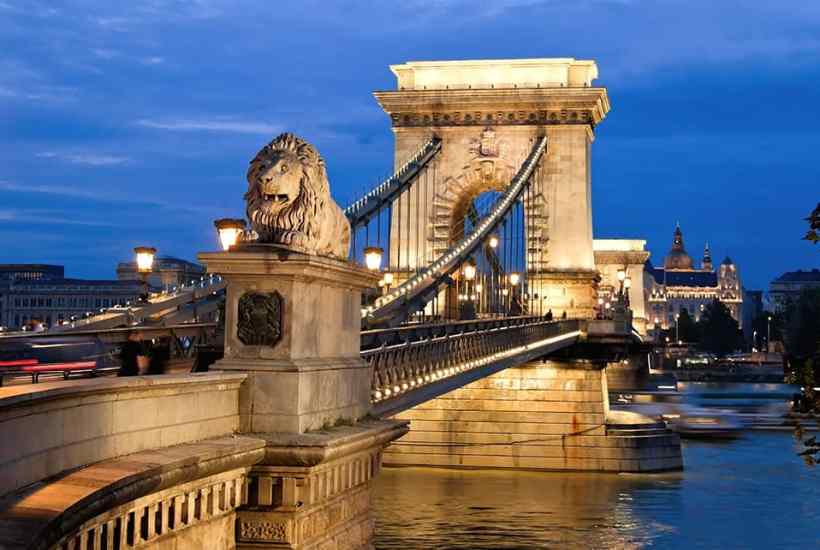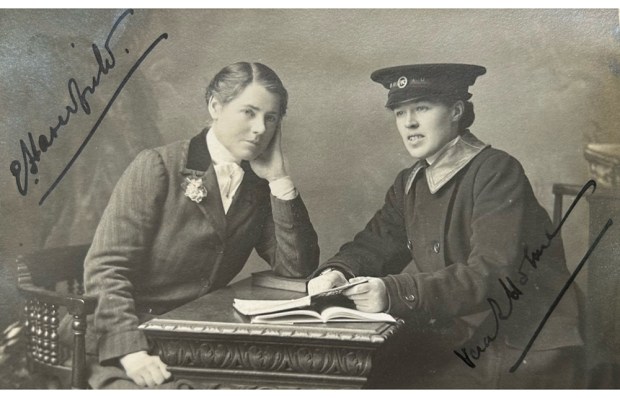‘Deplorable,’ wrote the historian Denis Sinor in 1958 about the state of Hungarian historiography in English. ‘Not only are the interpretations out of date but the facts themselves are all too often erroneous, and a proper name which is not misspelt is received with a sigh of relief by the reader who knows Hungarian.’ That was only two years after the revolution of 1956, when Hungary was on the world’s lips. Today, when the government of Viktor Orbán and the country’s position on Russia and Ukraine makes it equally talked about, this book – from an author born in Budapest in 1956 – is well timed, and its subtitle ‘Between East and West’ pertinently chosen. What is Hungary’s attitude to western Europe, to Russia and to Turkey? Historically it has been subjugated by all three.
Most western democracies are governed by and for their metropolitan elites. Hungary is not. An electoral map shows Budapest as a large, dissenting blob, and since the metro-polis is temperamentally so much at variance with the land of which it is ostensibly the head, it makes sense to give it its own story. Yet despite the (oddly mislabelled) city map with which the book begins, this is not, ultimately, a portrait of Budapest. What we get instead is a history of Hungary.
With its alternating peaks and troughs of supremacy and subjugation, that history describes a sine wave. Geographically, Hungary sits alone among Slavs and Germans, often controlled by others or forced into a liminal role: the bulwark of Romanised Europe against Barbaricum; the buffer between Christendom and the Ottoman empire; the partition rail from which the Iron Curtain hung. It is not always clear where Hungary’s allegiances lie. Her spirit is proudly independent, and she has a tendency to make surprising choices. Raimondo Montecuccoli, the 17th-century Habsburg enforcer tasked with bringing Hungarians into line, described them as an ‘ungrateful, unbending and rebellious people’. Ursula von der Leyen might say something similar today.
In 1896, while jointly at the helm of the vast, multi-ethnic Austro-Hungarian empire, Hungary celebrated her ‘millennium’: 1,000 years of Magyars in the Carpathian Basin. But trouble was brewing. Fearful that unless she asserted her identity she would be subsumed, she attempted to repeat the trick of her founding father King Stephen (crowned c. 1000) and unify her subject peoples. She failed. By 1918 the empire was in ruins and the subject peoples’ own national aspirations were fulfilled, at Hungary’s expense. The task Victor Sebestyen sets himself is to explain both the ‘boundless blindness’ (in the words of Crown Prince Rudolf) and the ‘extraordinary courage’ (in Sebestyen’s own) that have led Hungary to make the choices she has.
The result is highly readable. The author does not try to get to grips with Franz Joseph, content to leave him as a two-dimensional cut-out, but he is excellent on the interwar regent Miklós Horthy. In fact he is excellent on 20th-century Hungary generally. It is a complex subject, but Sebestyen has written about it before, and his hand is very sure. The story of the betrayal of the Jews, the only one of Hungary’s peoples to embrace a Magyar identity, is poignantly told.
The book is a compendium drawn from many sources. In pursuit of the points he wants to make, Sebestyen occasionally adduces evidence that is not quite fair. In terms of what he tells us about Budapest, there are few insights into the city of today. This is an elegiac evocation of a pre-lapsarian ideal, a ‘blue remembered’ Budapest , where people really do spend their days in coffee houses.
But like many cities where tourists have moved into the historic centre, Budapest has been put through a centrifuge. Local people have retreated to the periphery. In the street where the Orthodox synagogue stands, where on a Friday night not so long ago everything fell silent as the Shabbat candles were lit, crowds now roar past on stag weekends – a more egalitarian version, perhaps, of Edward, Prince of Wales’s behaviour in the parlours of Madam Rózsa in the 1890s. Budapest once again is a party town. But is this a sustainable role? Hungary was deliberately stripped of its resources after the first world war to prevent it from ever becoming a military threat again. Under the Comecon aegis, this worked all right. But the legacy of the Little Entente is still felt, and Hungary is highly dependent on Russian energy.
The book ends in 1989, with Hungary’s decision to open her border with Austria, helping to bring down the Soviet empire. A lot of water has flowed under the Chain Bridge since then. What are Hungary’s chances of pulling off a similar triumph today? Sebestyen gives us a frustratingly short conclusion. He has decided, perhaps wisely, to let those waters clear before wading into them.
Got something to add? Join the discussion and comment below.
Get 10 issues for just $10
Subscribe to The Spectator Australia today for the next 10 magazine issues, plus full online access, for just $10.
You might disagree with half of it, but you’ll enjoy reading all of it. Try your first month for free, then just $2 a week for the remainder of your first year.














Comments
Don't miss out
Join the conversation with other Spectator Australia readers. Subscribe to leave a comment.
SUBSCRIBEAlready a subscriber? Log in